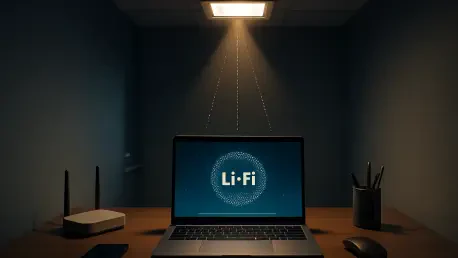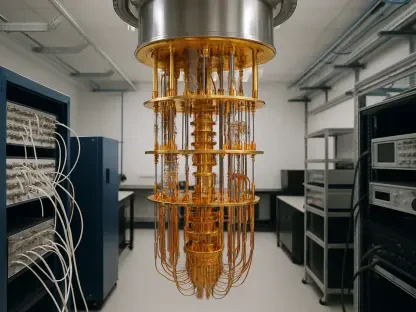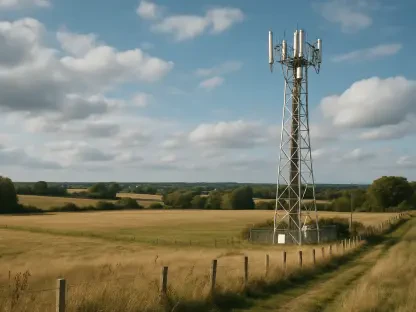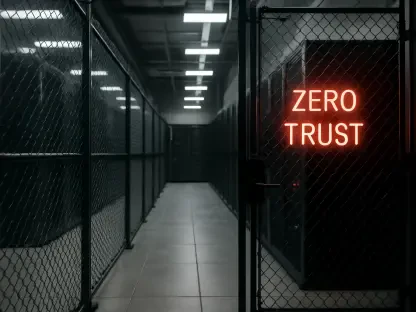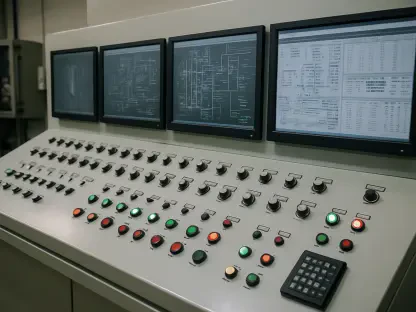In the high-stakes world of logistics, where every second counts and data breaches can cost millions, the demand for secure, reliable communication has never been greater, and Li-Fi, or Light Fidelity, emerges as a cutting-edge solution. This technology harnesses modulated LED light to transmit data at remarkable speeds, offering a stark contrast to traditional radio-frequency (RF) systems like Wi-Fi or Bluetooth. Operating within the visible or infrared spectrum, Li-Fi requires a direct line of sight, confining its signals to specific illuminated areas and inherently boosting security. This unique characteristic raises an intriguing question: could this light-based communication method redefine how sensitive information is handled in logistics environments? As supply chains grow more complex and cyber threats loom larger, exploring Li-Fi’s potential to carve out a transformative role in secure communication becomes not just relevant, but essential. This article delves into the strengths, challenges, and real-world applicability of Li-Fi in the logistics sector.
Unpacking Li-Fi’s Distinctive Advantages
Li-Fi brings a fresh perspective to wireless communication in logistics by leveraging rapid on-off switching of LED lights to deliver data at speeds that can exceed 1 Gbps under optimal conditions. With a typical range of 3 to 10 meters, confined to the area lit by a single light source, it offers a level of signal containment that RF technologies struggle to match. This makes Li-Fi a compelling choice for environments where data security is paramount, such as storage facilities for high-value goods or pharmaceuticals. Signals that cannot penetrate walls or obstacles create a natural barrier against unauthorized access, reducing the risk of interception. Furthermore, Li-Fi’s immunity to electromagnetic interference ensures stable connectivity in industrial settings filled with heavy machinery or metal structures, where Wi-Fi or Bluetooth signals often falter. This unique blend of speed, security, and reliability positions Li-Fi as a potential game-changer for specific logistics challenges.
Beyond its technical prowess, Li-Fi’s ability to operate without interfering with RF systems adds another layer of appeal for logistics operations. In crowded warehouses or distribution centers where multiple wireless networks coexist, the risk of signal congestion is a constant concern. Li-Fi sidesteps this issue entirely, as it functions in a completely different spectrum, ensuring that critical communications remain unaffected by nearby RF activity. This characteristic is particularly valuable in high-density environments where maintaining clear, uninterrupted data flow is essential for coordinating inventory tracking or equipment management. Additionally, the technology’s localized nature allows for precise control over who can access the network, as connectivity is limited to those within the illuminated zone. While not a universal solution, Li-Fi’s distinct advantages highlight its potential to address niche pain points in logistics communication with unmatched precision.
Niche Applications Enhancing Security
One of the most promising applications of Li-Fi in logistics lies in securing sensitive areas like vaults or restricted storage zones for high-value or regulated items. In such spaces, where even a minor data leak could have catastrophic consequences, Li-Fi ensures that transmissions remain strictly within the confines of the illuminated area. This physical limitation transforms a potential weakness into a strength, as it drastically lowers the chance of external interception compared to RF-based systems that can extend beyond intended boundaries. Logistics operators managing pharmaceuticals, luxury goods, or confidential documents could leverage this technology to create secure communication bubbles, protecting critical information from cyber threats. As supply chain security becomes a top priority, Li-Fi offers a tailored approach to safeguarding data in the most vulnerable environments.
Another area where Li-Fi shines is in supporting autonomous guided vehicles (AGVs) and other automated systems within logistics facilities. When operating under a fixed LED infrastructure, AGVs can use Li-Fi for real-time data handoffs, ensuring precise navigation and operational updates without the risk of interference from surrounding RF noise. This application is particularly useful in controlled settings where routes are predictable and light coverage can be strategically planned. Additionally, Li-Fi can enable zone-based access control, restricting network connectivity to specific illuminated areas and ensuring that only authorized personnel or devices within that space can communicate. This creates a natural security perimeter, ideal for high-risk zones in warehouses or distribution hubs. While limited in scope, these targeted use cases demonstrate how Li-Fi can enhance logistics security by addressing specific operational needs with a high degree of reliability.
Barriers to Widespread Adoption
Despite its intriguing benefits, Li-Fi faces substantial obstacles that prevent it from becoming a mainstream solution in logistics communication. The requirement for an unobstructed line of sight between transmitter and receiver means that any physical barrier—be it a shelf, wall, or even a passing worker—can disrupt connectivity. This limitation severely restricts its use in dynamic environments where movement is constant and layouts are complex. Moreover, the small coverage area of each light source, typically just a few meters, necessitates installing multiple transmitters to cover larger spaces, significantly increasing implementation costs. For logistics operators managing expansive facilities, this scalability issue poses a major hurdle, as the expense and effort of retrofitting infrastructure often outweigh the perceived benefits of adopting Li-Fi over established RF alternatives.
Compounding these challenges is the issue of hardware compatibility and mobility within logistics operations. Most devices currently in use lack built-in Li-Fi receivers, requiring additional investments in specialized equipment or adapters to enable communication. This added expense can deter adoption, especially for companies already reliant on Wi-Fi or 5G networks that support a wide range of existing hardware. Furthermore, seamless data handoff between different light sources remains underdeveloped, making Li-Fi less suitable for fast-moving operations or environments where continuous connectivity is critical. The upfront costs and integration complexities, combined with these technical constraints, position Li-Fi as a supplementary tool rather than a primary networking solution. Until these barriers are addressed, its role in logistics will likely remain confined to specific, controlled scenarios rather than broad application.
Current Trends and Future Possibilities
At present, the adoption of Li-Fi in logistics remains limited to specialized environments where its unique strengths align with specific needs. Facilities such as defense installations, medical cleanrooms, and pilot projects involving robotics or asset tracking in secure zones have begun to experiment with this technology. Implementation often involves retrofitting existing LED lighting with embedded transmitters and connecting them to core networks via Ethernet, while target devices are equipped with compatible receivers. Software for managing data flow and zone mapping also plays a crucial role in ensuring smooth operation. However, mainstream logistics hubs continue to favor Wi-Fi, Bluetooth Low Energy, and private 5G networks due to their wider compatibility, extensive coverage, and proven reliability in diverse settings, highlighting Li-Fi’s current status as a niche player in the industry.
Looking ahead, the trajectory of Li-Fi in logistics suggests a gradual, rather than explosive, integration into operational frameworks. Its slow adoption curve reflects not only the technology’s inherent limitations but also the dominance of RF-based systems that already meet most industry needs. Nevertheless, for logistics operators facing unique challenges—such as persistent RF interference or heightened security requirements—Li-Fi presents a viable option worth exploring, especially during planned lighting upgrades that can offset installation costs. As advancements in hardware compatibility and data handoff capabilities emerge over the coming years, the technology may find broader applicability. For now, its value lies in complementing existing systems, offering precision and security in targeted scenarios while the logistics sector continues to rely on more versatile solutions for comprehensive connectivity.
Reflecting on Li-Fi’s Niche Impact
Looking back, the exploration of Li-Fi in logistics revealed a technology that carved out a distinct, albeit narrow, role in enhancing secure communication. Its ability to deliver interference-free, contained data transmission in specific environments like secure storage zones or industrial facilities stood out as a significant achievement. Yet, the constraints of line-of-sight requirements and limited coverage ensured that it remained a specialized tool rather than a transformative force across the industry. As discussions around Li-Fi unfolded, its implementation in niche areas such as defense and pilot projects underscored a measured impact. Moving forward, logistics operators were encouraged to assess whether their specific security or operational challenges aligned with Li-Fi’s strengths, potentially integrating it as a complementary layer during infrastructure updates. The focus shifted to balancing its targeted benefits with broader network needs, paving the way for strategic adoption in the evolving landscape of supply chain communication.
